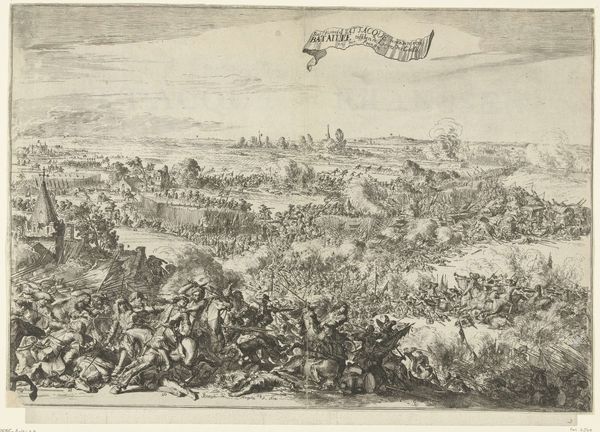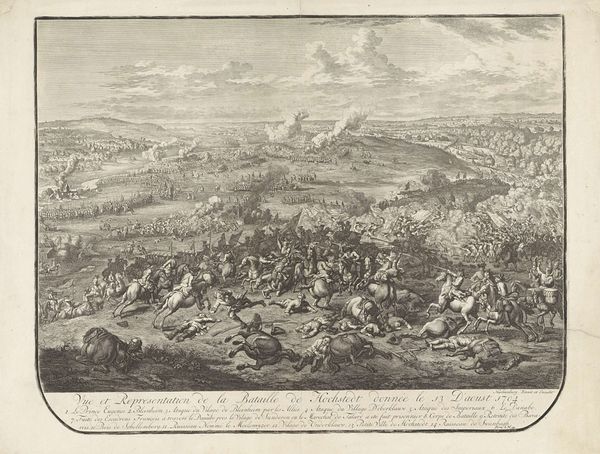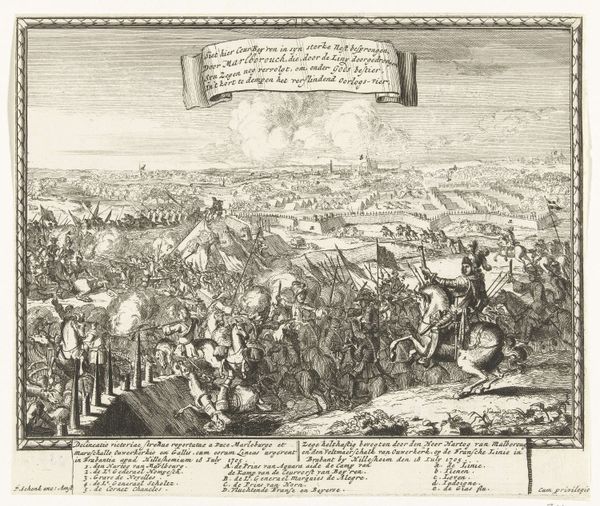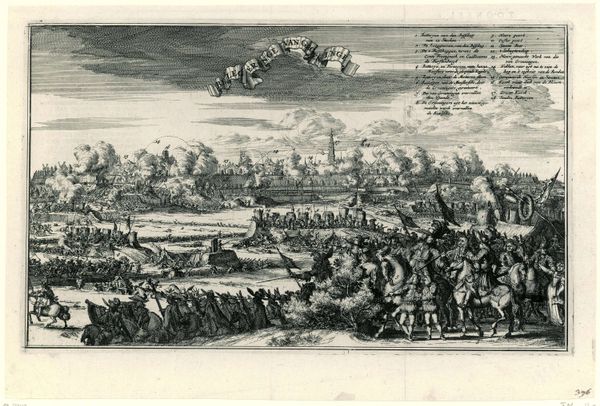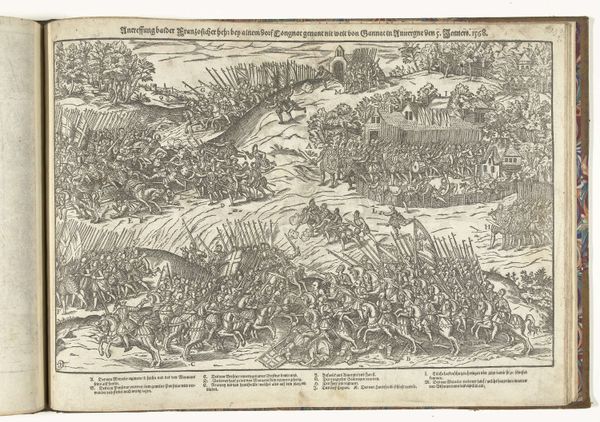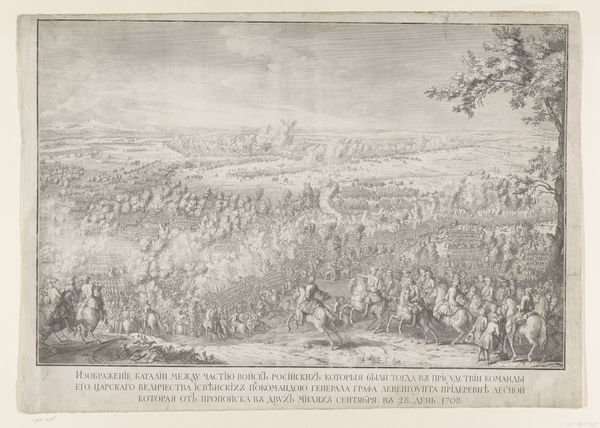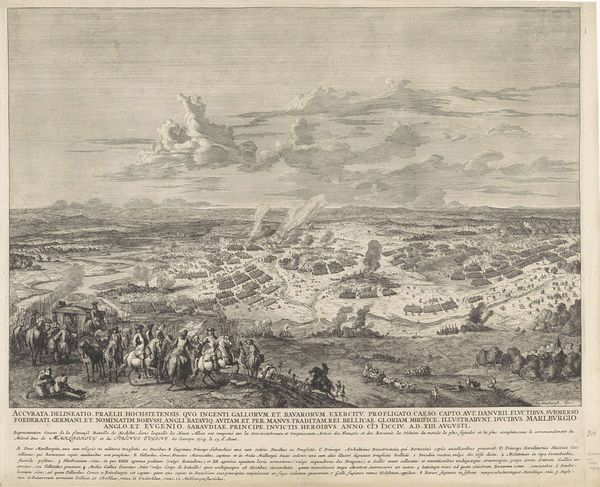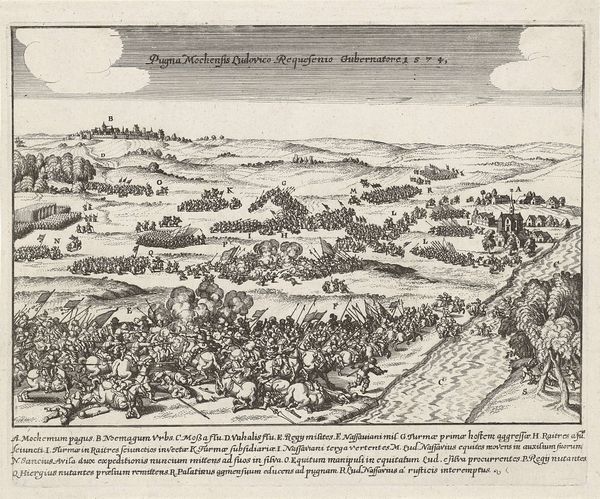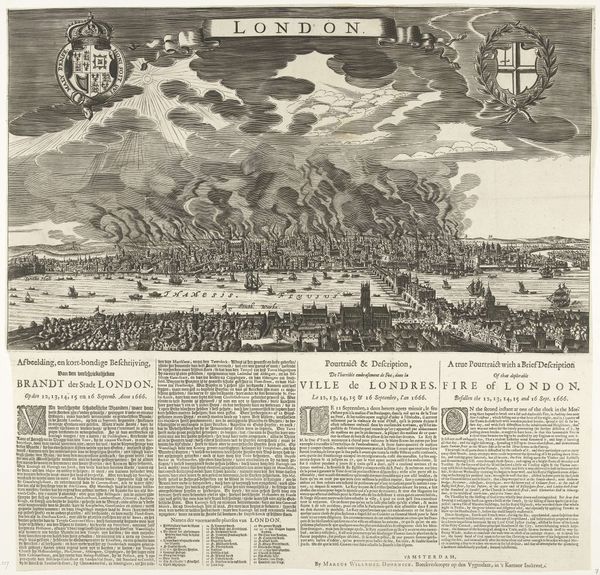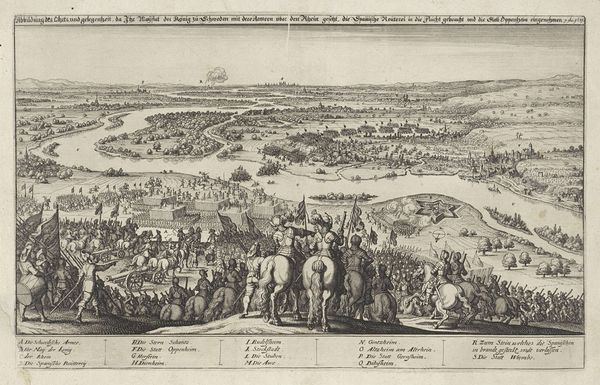
Overwinningen van Cornelis Speelman op het koninkrijk Makassar, 1666-1669 1670
0:00
0:00
print, engraving
#
narrative-art
#
baroque
#
dutch-golden-age
# print
#
landscape
#
figuration
#
line
#
cityscape
#
history-painting
#
engraving
Dimensions: height 508 mm, width 541 mm
Copyright: Rijks Museum: Open Domain
Curator: What a captivating work! This print, made around 1670 by Romeyn de Hooghe, depicts "Overwinningen van Cornelis Speelman op het koninkrijk Makassar, 1666-1669." Look at the scope, it seems the artist wants us to recognize every little event that brought on that victory. Editor: My first impression is one of overwhelming detail. It's incredibly busy, isn't it? Almost dizzying with its attempt to capture so much in a single frame. So what we see here is basically Dutch colonial expansionism turned into a comic book style picture? Curator: In a way, yes, you see echoes of similar historic struggles told across different lands and timelines. Here is more information than drama. The artist packs so much information—military strategies, the lay of the land, portraits of key figures. Even the inscription, dense and overflowing with details. It tells a story, justifying the actions that lead the Speelman to obtain the "victory". The very real people under those glorious representations might disagree if they were asked to describe them today. Editor: Precisely. It’s fascinating how art like this served as a powerful propaganda tool. Engravings like this, circulated widely, helped to shape public opinion and legitimize the Dutch East India Company's actions in Southeast Asia. Consider this, how was Makassar portrayed by artists native of the Kingdom? I doubt as something glorious. It would be fantastic to do that study some day. Curator: Indeed. The symbolism here, though, goes beyond mere propaganda. The Dutch saw themselves as bringing order and civilization to what they perceived as a chaotic region. Editor: Which is a claim made in all "conquests," if we read historical events in broad strokes. You see it throughout time and across geographies. But stepping back, look at the formal elements; notice how the artist uses line work to create depth. Also how the arrangement almost funnels our sight to different focus points within the frame. What emotional weight was this line work adding? Curator: I agree. See the portraits of Cornelis Speelman, and another dignitary almost acting as patron saints over a biblical scene. Line work reinforces that narrative, even today. The overall impression reinforces a grand, sweeping narrative of Dutch triumph, justifying, and glorifying their colonial exploits, for better or worse. Editor: Yes, exactly. Looking at this now, what initially struck me as chaotic, now speaks to the deeply woven strands of power and narrative embedded in the artwork. Curator: For me, it underscores the ongoing need to critically examine these visual narratives, not only for historical accuracy, but for the cultural symbolism that drives them.
Comments
No comments
Be the first to comment and join the conversation on the ultimate creative platform.


